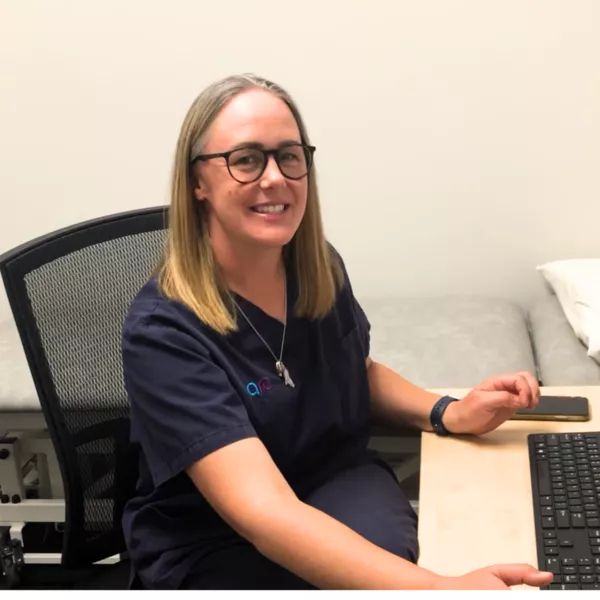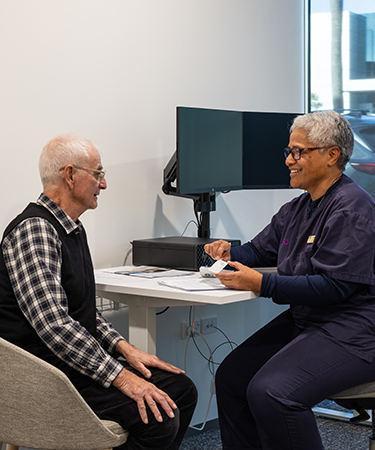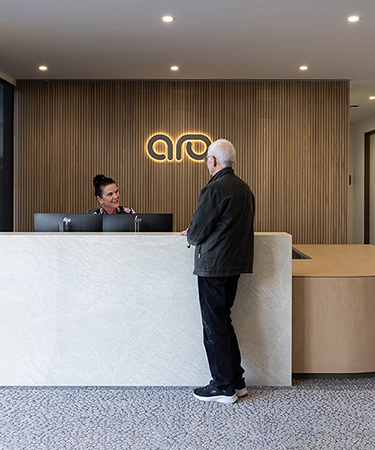Meet Jen - Bringing Precision and Passion to Cancer Care
Wed May 21st 2025
Radiation therapy is a powerful and precise treatment option, and at Auckland Radiation Oncology (ARO), there’s a team of experts working every day to make it as targeted and effective as possible.
One of those experts is Jen Knight, a Senior Radiation Therapist who has been in the field for 11 years. She’s passionate about her work and the role radiation therapy can play in helping people through cancer treatment. We sat down with her to find out more about what she does and what makes her so committed to her profession.
What Does a Radiation Therapist Do?
Radiation therapy is a field that has become very high tech! But at its core, it’s about delivering targeted beams of radiation to kill cancer cells while protecting the healthy tissue around them.
Jen works as a Radiation Therapy Planner – one of the team members working behind the scenes. Using advanced imaging like CT, PET, and MRI scans and the treatment area and dose prescriptions from the specialist, she designs a personalised treatment plan for each patient. It’s a bit like creating a 3D map, carefully plotting where and how radiation will be delivered.
Precision is Everything
One of the biggest challenges in Jen’s role is balancing two things: giving the cancer a strong enough dose of radiation, while protecting the healthy tissues nearby. This is where technology plays a huge role.
Jen explains that machines like the CyberKnife and Linear Accelerators (Linacs) are game changers. They allow incredibly precise targeting of tumours, which means patients can get stronger treatment to the cancer with fewer side effects.
“For example,” Jen says, “just a couple of years ago, if someone had more than about 5 small tumours in their brain, they would have received radiation to the whole brain. Now, we can treat each of those small lesions individually, and leave the rest of the brain untouched. That’s huge for reducing side effects, such as preserving memory, reducing brain fog, and avoiding emotional side effects.”
Matching Software with Smart Machines
In her role, Jen uses highly specialised computer software to carefully plan every angle, dose and beam path. Jen’s role is like a navigator, creating the safest and most precise path to treat each person’s cancer.
The software that helps plan the treatment is also evolving quickly. Jen finds this aspect of her work exciting. She says “It’s also rewarding, knowing we are providing patients with the very best that’s available.”
In fact, ARO recently became one of the first clinics in the world to use a new software platform by RayStation for CyberKnife treatment planning – and Jen was part of the team behind this cutting-edge approach.
She says that it was exciting and challenging, being among the first to use the two together. However, Jen says she focused on the principles of her training, and this translated well for the new technology. The ARO team collaborated closely with another hospital in Australia, sharing experience gained across both centres to qualify their approach.
What Happens Before Treatment Starts?
Once a patient has had their scan, it might take between 48 hours and 4 weeks to begin treatment. That time is spent doing intensive planning by Jen or other members of the planning team. They:
- Carefully outline the tumour on the scan (slice-by-slice, 2mm at a time!)
- Determine the best machine for treatment for the individual
- Decide on the radiation dose
- Choose the safest angles and plan how the radiation will be delivered
Every plan is reviewed by another planner or a medical physicist, and even tested on a special model (called a phantom) before it’s used with a patient, to ensure the correct dose will be delivered.
For complex cases, the plan is discussed by the wider team, so multiple perspectives are included in the final plan.
Staying Connected with Patients
Even though Jen spends a lot of her time planning, she also treats patients. The radiation therapists who deliver treatment are the friendly faces patients see each day, operating the machines, making sure everything goes smoothly and discussing side effects or any issues that arise throughout the treatment.
Jen says keeping this patient connection is important to her. “It reminds me that every plan I make is for a real person. When I spend time with people, I feel a huge amount of compassion for them, and I bring this back to my planning role.”
The Future of Radiation
The field of radiation therapy is moving so fast, that in many ways it feels like we are living in the future already. Jen sees artificial intelligence (AI) taking a bigger role in the next decade.
Already, the team at ARO are leading the way in New Zealand, using AI to help outline tumours on scans – a task that usually takes planners like Jen many hours. While a human still checks every detail, the time saved allows the planner to focus on more bespoke areas of planning.
Jen is also passionate about raising awareness of radiation therapy as a treatment option. “Radiation is part of treatment for about 50% of cancers, but studies[1] show another 25% of people could benefit, and often don’t know it.”
She gives the example of breast cancer, where some women could have radiotherapy instead of surgery – getting the same outcome, without needing a mastectomy. “For many, avoiding that kind of surgery would be life-changing.”
Radiation is also used for pain relief, especially in palliative care. “A single treatment can relieve bone pain for up to six months – better than months on morphine,” she says.
Jen’s Next Step
To help bring more awareness and understanding to the public, Jen is currently studying a Master’s in Public Health, focusing on how New Zealanders view radiation therapy and how that might influence access and funding.
“I love this work,” Jen says. “It’s incredibly rewarding to be part of a team helping people fight cancer with such precision and care. There’s so much more radiation therapy can offer – and I want more people to know that.”
With over a decade of experience, and a deep commitment to both her profession and her patients, Jen is a valued member of the ARO team—bringing expertise, empathy, and a drive to make a difference every day. She’s also a passionate ambassador for the profession, constantly advocating for greater awareness of the role radiation therapy plays in modern cancer care.

Understanding Your Treatment
The Patient Pathway
We understand you may be anxious about having radiation therapy. Read about the patient pathway and what to expect before, during and after radiation therapy treatment. At ARO we work closely with your radiation oncologist to develop an individualised treatment plan for each patient.
Explore the patient pathway





